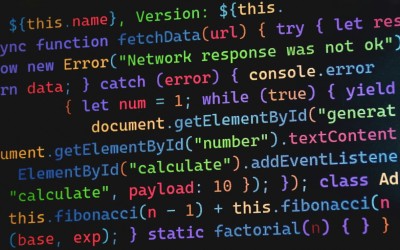Artificial intelligence (AI) has emerged as a transformative force across various sectors, offering unprecedented capabilities in data processing, automation, and decision-making. Among its many applications, AI has significantly impacted the dissemination of information, both positively and negatively. While AI has the potential to enhance communication and democratize access to information, it also poses a formidable threat in the form of fake news. The ability of AI to generate, amplify, and spread false information poses a significant challenge to societies worldwide, endangering public discourse, democracy, and trust. This blog post will explore AI's dangerous role in the proliferation of fake news, examining the mechanisms through which AI contributes to this phenomenon and the broader implications for society.
To comprehend how AI contributes to fake news, it is essential to understand the mechanics behind AI-driven content generation. AI, particularly through advancements in natural language processing (NLP) and machine learning, can produce text that is indistinguishable from human-written content. Technologies such as OpenAI's GPT-3 have demonstrated the ability to generate coherent and contextually relevant text across various domains. These capabilities can be harnessed to create fake news articles that appear credible and authoritative.
AI algorithms can analyze vast amounts of data, identifying patterns and trends that can be exploited to craft compelling narratives. For instance, AI can detect emotional triggers or biases within a target audience and tailor content to exploit these vulnerabilities. The result is a sophisticated form of misinformation that resonates with specific groups, making it more likely to be believed and shared. This targeted approach to fake news generation increases its potency and reach, amplifying its impact across digital platforms.
Beyond text, AI also plays a critical role in the creation of deepfakes—synthetic media where a person in an existing image or video is replaced with someone else's likeness. Deepfake technology, powered by AI, can produce hyper-realistic videos and audio clips that are extremely difficult to distinguish from authentic recordings. This capability poses a significant threat as it can be used to fabricate speeches, interviews, or any other visual and audio content, effectively creating a new dimension of fake news.
The implications of deepfakes are profound. They can be used to discredit public figures, manipulate political discourse, and incite social unrest. For example, a deepfake video of a political leader making inflammatory statements could lead to widespread panic or even violence. The challenge lies in the technological sophistication of deepfakes, which often outpaces current detection methods, making it difficult for both individuals and institutions to discern fact from fiction.
Once fake news is generated, AI continues to play a crucial role in its amplification and distribution. Social media platforms, which have become primary sources of news for many people, utilize AI algorithms to curate content based on user preferences and behaviors. These algorithms often prioritize content that is engaging or sensational, inadvertently promoting fake news that is designed to exploit these characteristics.
The virality of fake news is further exacerbated by AI-driven bots that can flood platforms with false narratives, artificially inflating their popularity and reach. These bots can interact with real users, creating an illusion of consensus or widespread belief in the misinformation being spread. This amplification mechanism not only accelerates the dissemination of fake news but also reinforces its credibility by exploiting social proof dynamics—if many people appear to believe something, it is more likely to be perceived as true.
The infiltration of AI-driven fake news into public discourse has several detrimental effects on society. One of the most significant impacts is the erosion of trust in traditional media and institutions. As fake news becomes more prevalent, people may become increasingly skeptical of all information, leading to a general decline in trust. This skepticism can undermine the role of reliable news sources, making it more challenging for the public to access accurate information.
Furthermore, AI-generated fake news can exacerbate social divisions by reinforcing existing biases and polarizing communities. When misinformation aligns with pre-existing beliefs, it tends to be accepted uncritically, deepening ideological divides. This polarization can have serious consequences for democratic processes, as it impairs the ability of societies to engage in constructive dialogue and reach consensus on critical issues.
The rise of AI in the creation and dissemination of fake news also raises significant legal and ethical questions. Traditional regulatory frameworks are often ill-equipped to address the challenges posed by AI, particularly given its rapid evolution and the global nature of digital platforms. Crafting effective regulations that balance the need for free expression with the imperative to curb misinformation is a complex task that requires international cooperation and innovative policy solutions.
Ethically, the use of AI to spread fake news raises questions about accountability and responsibility. Determining who is liable for the creation and dissemination of AI-generated misinformation is a contentious issue. Should the developers of AI technologies be held responsible, or does the onus lie with those who misuse these tools? Addressing these ethical dilemmas is crucial to developing a comprehensive strategy for combating fake news.
Despite its role in exacerbating the fake news problem, AI also holds potential as a tool to combat misinformation. Advanced AI systems can be employed to detect and flag fake news, helping to prevent its spread. Machine learning algorithms can be trained to identify patterns indicative of false information, enabling faster and more accurate verification processes.
Moreover, AI can assist in the creation of educational tools that enhance media literacy, equipping individuals with the skills needed to critically evaluate information. By fostering a more discerning public, AI can help mitigate the effects of fake news, empowering people to make informed decisions based on accurate information.
Collaboration between technology companies, governments, and civil society is essential to harness AI's potential in addressing the fake news crisis. By investing in research and development of AI tools for misinformation detection and prevention, stakeholders can work towards a more resilient information ecosystem.
AI's role in the proliferation of fake news presents a complex challenge that requires a multifaceted response. While AI technologies have the potential to generate persuasive and sophisticated misinformation, they also offer tools for detection and prevention. Balancing these dual roles is critical to safeguarding the integrity of information and preserving democratic values in the digital age.
As societies navigate the evolving landscape of AI and misinformation, fostering collaboration and dialogue among stakeholders will be essential. By leveraging the strengths of AI responsibly and ethically, it is possible to mitigate the risks associated with fake news while promoting a more informed and engaged public.




